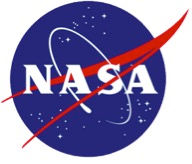When UConn Meets NASA
- Sruthi Kalidindi
- Mar 11, 2018
- 3 min read
“Mission: to explore strange new worlds, to seek out new life and new civilizations, to boldly go where no man has gone before (apologies to Star Wars fans).” While this is not NASA’s official mission, it comes close enough to the truth. As mankind, we want to break the next frontier, go further into space and one day, reach a point where we can travel to a new world. All this excitement to achieve these sci-fi-esque goals, however, leaves the tremendous work of scientists out of the limelight.

How do we travel further into space? How can we make spacecrafts that are capable of traveling that far? How do we make technology which is both capable and safe? These are legitimate questions being answered at the University of Connecticut's very own campus by Professor Seok Woo Lee.

Pictured above: Professor Seok Woo Lee
Over the summer, Professor Lee was awarded the Early Career Faculty Space Technology Research Grant by NASA. These grants are geared towards young and exceptionally bright faculty in hopes to increase NASA’s research scope as well as the faculty member’s networking web. Over the next three years, Professor Lee will be working on the development of better and more reliable Cryogenic Linear Actuators.
Cryogenic-Linear-Actuator. Sounds like it is from a sci-fi novel? Rest assured, it most definitely is not. NASA will not be freezing any humans in the near future. In real world uses, linear actuators are very similar to motors. Motors in cars or appliances take electrical energy and output mechanical energy that can rotate objects. Actuators are very similar: they take electrical energy but they output mechanical energy in a linear direction. Think about it as a forward/backward output instead of rotational one.

Actuators in spacecrafts are used for fine tune control, vibration management and much more. The challenges of space travel come into context when considering the extreme temperatures faced by a spacecraft. Here on earth, the average temperature is around 61℉. Some places reach a balmy 130℉ and others a chilly -126℉. But overall, the temperatures are manageable and most machinery can continue to work even when the temperature dips higher and lower than normal.
What about when you drag that temperature down to 0 Kelvin? This is when science simply starts to disintegrate. 0 Kelvin is the temperature when all movement in matter stops. At this temperature, scientists cannot expect materials to act like they do on earth. But then how can NASA make spacecrafts that work in such low temperatures of deep space? This is where Professor Lee’s research comes in.
Professor Lee is trying to perfect a linear actuator made of material which will work with incredible precision and reliability at temperatures only seen in space. In years to come, a bulk-scale novel intermetallic compound, CaFe2As2, which exhibits superelastic deformation and ultra-high strength, will be tested in actuators. The idea for actuators used in space travel is small-volume and high precision. Professor Lee will be using CaFe2As2 to design an actuator which is smaller, more powerful and yet incredibly precise. While an actuator is a small component, this incredible endeavor to create better parts is in fact a larger collaborative effort to create better spacecrafts.
Space travel will never be easy. It will push humanity to its brink, encourage collaboration, and push the boundaries of human endeavor. This is exactly what is happening at the University of Connecticut. Professor Lee is tackling the problems of the future. He may not have the answer today or tomorrow, but everyday is one step closer to the solution; one day closer to deep space travel. So what about you? What will you do on campus to push the boundaries of this world?








Comments